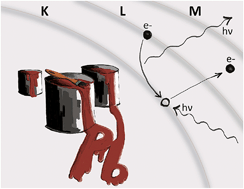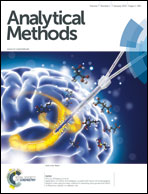Radioisotope-based XRF instrumentation for determination of lead in paint: an assessment of the current accuracy and reliability of portable analyzers used in New York State
Abstract
Childhood lead poisoning remains a significant public health issue, especially in the United States, where the most common source of exposure is lead-based paint (LBP). X-Ray Fluorescence (XRF) analysis is still the most widely used method for detecting LBP in the field. Although portable XRF instrumentation based on excitation from a 57Co radioisotope has been used for more than 30 years, there have been few reports documenting its performance. Here we describe a study that was conducted by the New York State Department of Health's Wadsworth Center laboratory in response to concerns raised by field users of the RMD LPA-1 XRF analyzer (Protec Instrument Corp.) working across the state. The performance issues were investigated for ten field units: five reported as problematic based on user feedback, and 5 that were not. Accuracy was assessed against NIST SRM 2579 lead in paint, which was developed specifically for use with portable XRF analyzers. On average, the absolute bias found was within ±20% at the threshold value for LBP (1.0 mg cm−2) based on the NIST SRM 2579 data. Calibration blocks provided with each analyzer for quality assurance monitoring were evaluated using a different XRF analyzer (Niton XLT 3t 700s GOLDD) operated in painted products mode (μg cm−2). However, when the Niton XRF analyzer was checked against NIST SRM 2579, it was found to have a negative bias. That negative bias was easily corrected using a “calibration” curve with a quadratic fit to the data. NIST-corrected data obtained for the calibration blocks showed assigned values were within the manufacturer's stated tolerance range, albeit with a consistent positive bias. The root cause for 3 of the 5 problematic devices was likely incorrect positioning of the device. A low bias for a fourth device was likely caused by a deteriorated calibration block, and the fifth device, while just within the manufacturer's technical specifications, was the only one confirmed with a low bias. Increased operator training may resolve some of the issues reported in the field; on-going competency assessments may be warranted for this hand-held technology.


 Please wait while we load your content...
Please wait while we load your content...